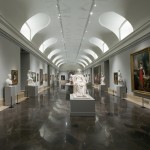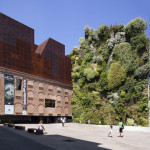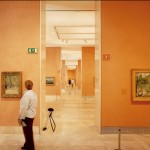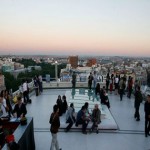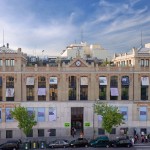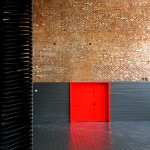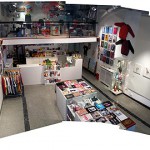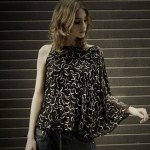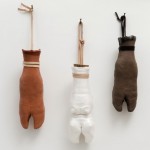国立ソフィア王妃芸術センターMuseo Reina Sofía
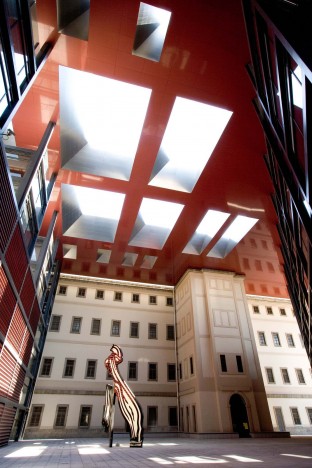
Museo Nacional Centro de Arte Reina Sofía © Photo: Jaoquín Cortés
Many journeys into Madrid end at the railway station of Atocha and so it is quite fitting that the start of your exploration of Madrid can begin nearby at the Museo Nacional Centro de Arte Reina Sofía. The original building was a hospital whichマドリード内の旅のほとんどはアトーチャ駅で終焉となるため、また新たなマドリード探検の旅がここ国立ソフィア王妃芸術センターから始まると言っても過言では無いだろう。元は病院だったこの建物は1980年代から随時改築、増築を繰り返し、美術館として2005年にオープンした。結果的に、とてもシンプルな作りの、壮観でモダンな建物は美しくデザインされた空間となっている。壮大なエントランスなどは無く、道なりに歩くと左手に図書館が見えるエリアへ行き着くようになっている。右手には美術館の本館があり、吹き抜けを見上げると格子状の屋根開口部が見え、屋上のテラスからはマドリード市街や通りなど美しい景色が一望できる。
![]()
コレクションは20世紀の芸術に焦点をあて、1900年から1945年までと、1945年から1968年まで、および1962年から1982年までの3期に分けて展示している。これは美術史の3つの主要なテーマに沿ったもので、第二次世界大戦前の進歩と不満の間に葛藤を抱えていた社会、戦後は消費社会アメリカと共産主義社会ロシアとの間で二極化した社会、そして1962年からの20年間は、深く根付いた政治的、社会的、文化的な動きが広範囲に影響を及ぼした社会としている。
![]()
常設コレクションを見て歩くと、これまで芸術が社会をどのように表現してきたのか、そして社会が芸術にどのように影響を与えてきたのかが鮮明にわかる。最初のコレクションではパブロ・ピカソなどの絵画があり、2つ目のコレクションではアルベルト・グレコのような創造的なアーティストの作品が展示されている。そして3つ目のコレクションでは、ロバート・フィリーオからナチョ・クリアドやコンチャ・ヘレスまで多くのアーティストの絵画を見ることができる。
![]()
美術館の本館や国立ソフィア王妃芸術センターの一部を成す他の館内では、広範囲にわたる20世紀のアーティストや芸術に焦点を当てた展覧会を定期的に開催している。美術館のコレクションや展示を本格的に鑑賞するためには少なくとも半日は必要だが、旅行中で限られた時間しかない場合は美術館のウェブサイトで詳細な地図を見るとよいだろう。
![]()
また美術館は幅広い来館者のための教育プログラムだけではなく、ライブアートパフォーマンスやオーディオビジュアルプログラム、また学生が大学院資格を取得したり、セミナーに参加することができる研究センターなどの公共プログラムも展開している。
![]()
先に述べた図書館は入場無料で現代美術の特殊素材のコレクションがあり、ゆっくりリラックスしながらコーヒーを楽しめるバーやテラスがいくつかある。マドリードが初めての人には、列車を降りてこの美術館とその魅力的な建築、そしてもちろん美術作品の鑑賞が何よりも1番のお勧めコースである。
![]()
美術館の入場料は通常6ユーロだが、日時や時間によっては無料で、さらに18歳未満の子供や学生も無料で入ることができる。美術館の他の会場パラシオ・デ・クリスタルとパラシオ・デ・ベラスケスも無料で入ることができる。
![]()
Museo Nacional Centro de Arte Reina Sofía
住所:C/ Santa Isabel 52, Madrid 28012
入館料:一般 €6
TEL:+34 91 774 1000
info@museoreinasofia.es
http://www.museoreinasofia.es
![]()
Text: Michael Sullivan since the 1980s has frequently been renovated and added to, culminating in the opening in 2005 of the most recent expansion. The end result is quite simply a spectacular and modern venue which is well designed and aesthetically pleasing. Rather than having one grand entrance, walking from the street leads into an large enclosed area with the library building to the left, the main building housing art to the right and above a grid like open roof. It is very impressive on first viewing, but not quite as impressive as going to the top floor terrace which allows views into Madrid and back down into the street.
![]()
The permanent collection is focused on twentieth century art divided into three different periods of time, 1900-1945, 1945-1968, and 1962-1982. This addresses three main themes of art history; the pre-World War Two society with its conflict between progress and discontentment, post-war society which became polarised between consumer America and Communist Russia, and the twenty years from 1962 which saw the widespread influence of deep rooted political, social and cultural movements. A walk through the permanent collection is a vivid reminder of how art always represents society, and thusly how society influences art. In the first collection we can see paintings by artists such as Pablo Picasso, in the second collection work by creative people like Alberto Greco and in the third collection a virtual plethora of art by artists ranging from Robert Filliou, to Nacho Criado and Concha Jerez. This museum of art also regularly hosts exhibitions in its main building, and in other buildings which form a part of the Museo Nacional Centro de Arte Reina Sofía. Typically the exhibitions focus on artists and art across the spectrum of the twentieth century. In order to properly appreciate the museum’s collections and exhibitions it must be kept in mind that at least half a day is needed, however, in order to complete a more targeted trip the museum’s webpages have detailed maps showing where exactly everything is.
![]()
The museum is also dedicated to public programmes like Live Arts performances, audio-visual programmes, a study centre where students can complete postgraduate qualifications or attend seminars, as well as education programmes for a wide range of visitors. As mentioned before there is a library which is free to enter and contains a collection of special material on contemporary art and there are also several bar terraces which are perfect for relaxation and a cup of coffee. If you are in Madrid for the first time, nothing is more recommendable after getting off a train than to discover this amazing museum, its intriguing architecture and of course its art.
![]()
Please note that although general admission is €6, on certain days and times entrance is free, and it is also free for under 18s and university students. The museum’s other venues, Palacio de Cristal and Palacio de Velázquez, are free to enter.
![]()
Museo Nacional Centro de Arte Reina Sofía
Address: C/ Santa Isabel 52, Madrid 28012
Admission: General entrance €6
Tel: +34 91 774 1000
info@museoreinasofia.es
http://www.museoreinasofia.es
![]()
Text: Michael Sullivan
